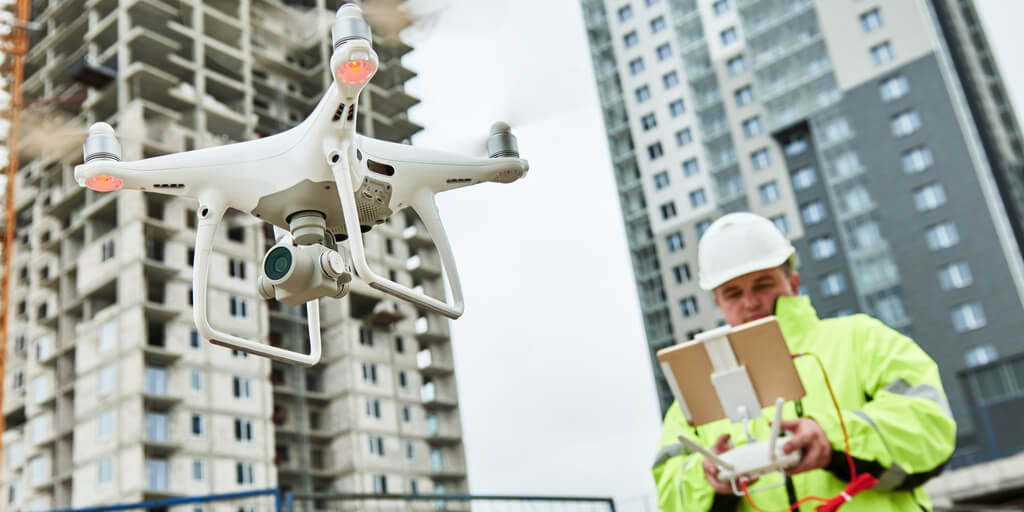Both in the development of construction projects, the sale of real estate projects, and for architectural design, the use of technological tools has not been long in coming and many users in the field are already satisfying the demanding demands of their clients with these methods and using them to grow construction businesses around the world.
Architectural visualization is not only limited to 3D images, but it also advances according to the adoption of new technologies from different industries. In this case, video games have been the engine for the generation of innovative products to satisfy a market eager for new digital experiences.
Considering the nature of the ecosystem in which we operate, today we bring you in the blog the emerging technologies that are changing the construction paradigm:
How Digital Technology is facing the current challenges in the construction industry
Despite the fact that the construction sector seemed to be one of the most reluctant to technological change, the bursting of the housing bubble was a complete revolution. The general transformation of consumers forced the sector to reinvent itself by introducing technology in construction. These are the most significant changes that can be seen within this market.
Today, the construction sector is in a historic moment to be able to apply these new technologies. The conditions are optimal, and the different professionals are prepared for it. Anyone saying “I am a subcontractor looking for work” will almost always have an answer in the near future.
In fact, many players within the industry predict that a construction site will look very different in a decade. In the gallery above, review the five most revolutionary technologies in the construction world.
Digital technology is changing reshaping the construction industry
Mobile technology and software
In the construction and public works sector, smartphones are being used more and more. There are many mobile applications available for this sector. We offer you a list of some of the most important needs that today’s mobile applications meet. The subject relates to mobile applications in the construction field.
Mobile applications have been created to allow construction workers to find all the monitoring information on their smartphone or tablet. Since the organization and the good progress of the site are ensured by interveners who are on site. They need access to key activity figures, the balance sheet for the day, or forecasts for the days to come.
Mobile applications, therefore, offer an intuitive interface that allows these parties to easily access site information, on the one hand. And secondly, they also help lift the information “field” to convey a clear vision of reality and the ‘ stage of completion in order to make clear the necessary decisions.
With a construction management application available on mobile, with a simple click on digital maps, stakeholders can accompany these photo plans for a clear understanding by all.
Autonomous construction equipment
The transition from the BIM model to the construction site is the ideal solution to obtain a most precise arrangement. These little machines project our models where they are supposed to be. You will, therefore, think that this represents a considerable time-saving in comparison with the reading of paper plans and the use of chalk lines and pencils. Expect this to become a benchmark among traders in the near future.
Engineers, architects, and designers have already seen their careers evolved thanks to the BIM methodology, capable of offering the possibility of executing immersive projects that make it possible to identify and reduce errors in the planning phase. It is an essential technology in the world of architecture, and which requires qualified people to continue with the change.
Building information modeling
The creation of physical objects from a digital model is now possible thanks to additive manufacturing (the process of manufacturing a physical object by stacking successive layers of material using an extruder placed on a gantry to 3 axes). 3D printing is no longer reserved for small household objects such as combs. Entire buildings were “printed” in concrete in just 24 hours. We can expect that this technology will continue to improve and that it will find its place in the manufacture of construction parts, whether it is a single element or a whole.
Not too long ago it seemed like science fiction and in the blink of an eye, we have realized that 3D Printing is here to stay. As one of the most revolutionary technologies for the architecture sector, it is presented with the ability to create elements of different sizes and prefabricate spare parts and structures for the production of the final product. The technology works the same regardless of the size of the object to be printed: it is an addition fabrication where a three-dimensional object is created by superimposing successive layers of material. This technological trend is not only going to revolutionize the world of construction but can also bring the key to the development of solidarity projects.
Laser scanning
The days of the measuring tape are behind us (even if, for reasons that I do not know, it remains the preferred method of measurement). Laser scanners offer the possibility of digitizing the entire geometry of an area with precision and then viewing it in 3D (point cloud). Given the accuracy of the results and the time savings offered by laser scanners compared to traditional methods of assessing site conditions, you can be sure that this technique will be used more and more.
Artificial intelligence and machine learning
Algorithms, machine learning, and Artificial Intelligence are also entering, especially in the world of design, being able to generate an environment and learn from mistakes to configure new patterns.
In terms of efficient buildings and facilities, home automation and the various devices that supply automation to this space are meaningless if the circle of hyper–connectivity cannot be closed. The Internet of Things is a must in architecture and facilitates the possibility of integrating all the terminals that make a space intelligent. Without it, each of them would play an individual role and the structure would be meaningless.
Supply chain management
Digitization of construction aims to find ways and means to reduce waste in the construction supply chain and improve efficiency on construction sites in order to increase productivity in the industry. This includes, but is not limited to, approaches such as Lean or the Last Planner, but also, and above all, multidisciplinary prefabrication and off-site construction. The sustainable aspect of construction is linked to the three pillars of sustainable development, including economic, ecological and social challenges, but also the challenges linked to the necessary transformation of supply methods, integrated design, etc.
Analytics
Anyone who relies on new technologies in the construction industry to be able to complete projects more quickly often achieves remarkable results. However, if you are unable to draw usable insights from the project data, you miss out on far more significant opportunities – more or less as if you had developed a better, faster aircraft, only to ultimately never let it fly into the air.
Although the extensive digitization of construction documents provides a wealth of information, most construction companies simply do not have time to analyze the relevant data amidst the hectic pace of several parallel orders. Machine learning can automate the process, revealing the underlying causes of the ongoing problems. Whether it’s quality issues or safety concerns – big data allows companies to identify trends in their construction processes, so that future projects can be targeted, and better results achieved.




